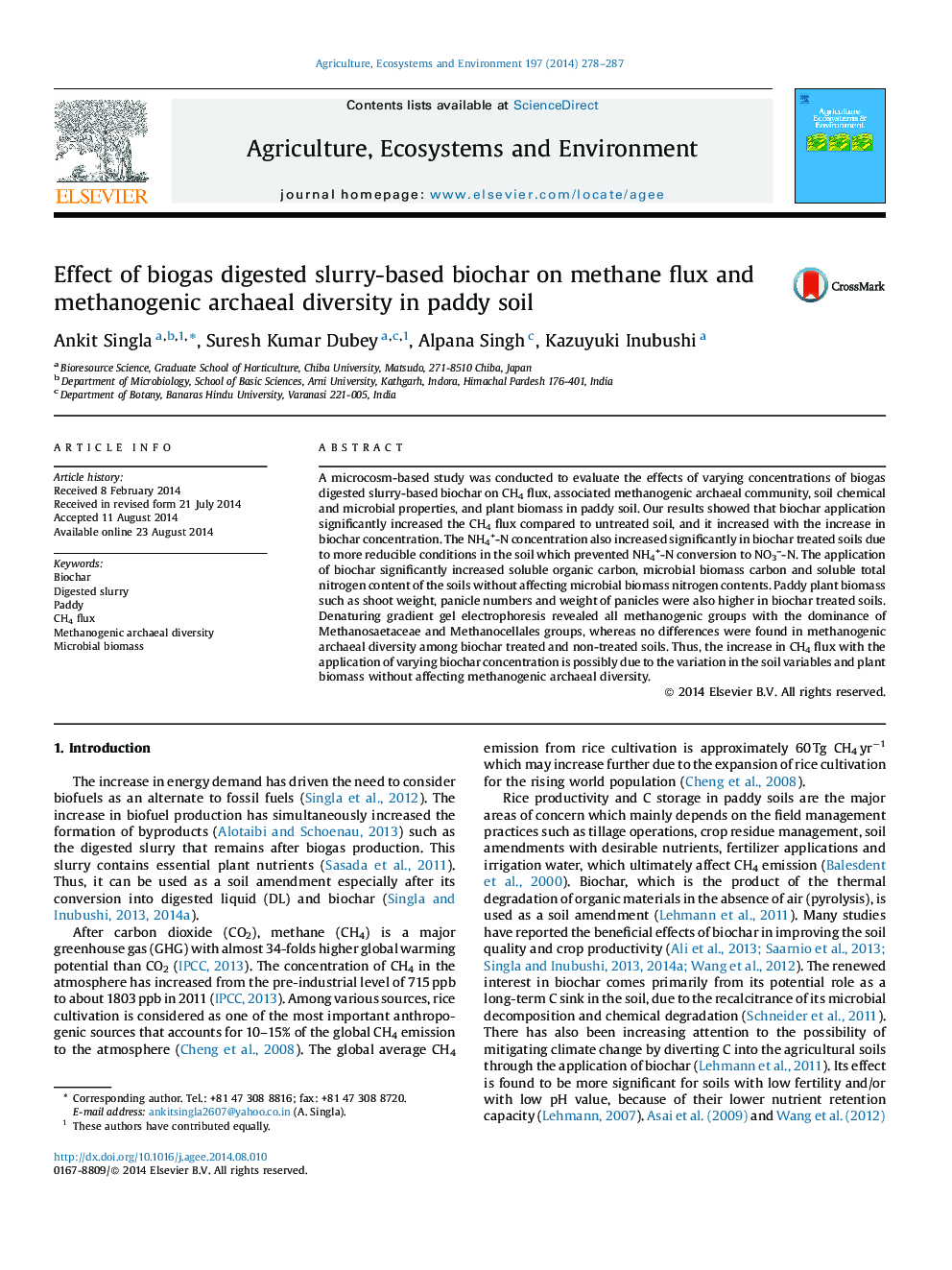| Article ID | Journal | Published Year | Pages | File Type |
|---|---|---|---|---|
| 2413829 | Agriculture, Ecosystems & Environment | 2014 | 10 Pages |
•CH4 flux in paddy vegetation was investigated under biochar amendment.•Biochar application increased soil NH4+-N, SOC, STN and MBC contents.•Biochar application did not affect soil MBN contents and methanogenic archaea.•CH4 emission and plant biomass increased in biochar treated soils.
A microcosm-based study was conducted to evaluate the effects of varying concentrations of biogas digested slurry-based biochar on CH4 flux, associated methanogenic archaeal community, soil chemical and microbial properties, and plant biomass in paddy soil. Our results showed that biochar application significantly increased the CH4 flux compared to untreated soil, and it increased with the increase in biochar concentration. The NH4+-N concentration also increased significantly in biochar treated soils due to more reducible conditions in the soil which prevented NH4+-N conversion to NO3–-N. The application of biochar significantly increased soluble organic carbon, microbial biomass carbon and soluble total nitrogen content of the soils without affecting microbial biomass nitrogen contents. Paddy plant biomass such as shoot weight, panicle numbers and weight of panicles were also higher in biochar treated soils. Denaturing gradient gel electrophoresis revealed all methanogenic groups with the dominance of Methanosaetaceae and Methanocellales groups, whereas no differences were found in methanogenic archaeal diversity among biochar treated and non-treated soils. Thus, the increase in CH4 flux with the application of varying biochar concentration is possibly due to the variation in the soil variables and plant biomass without affecting methanogenic archaeal diversity.
